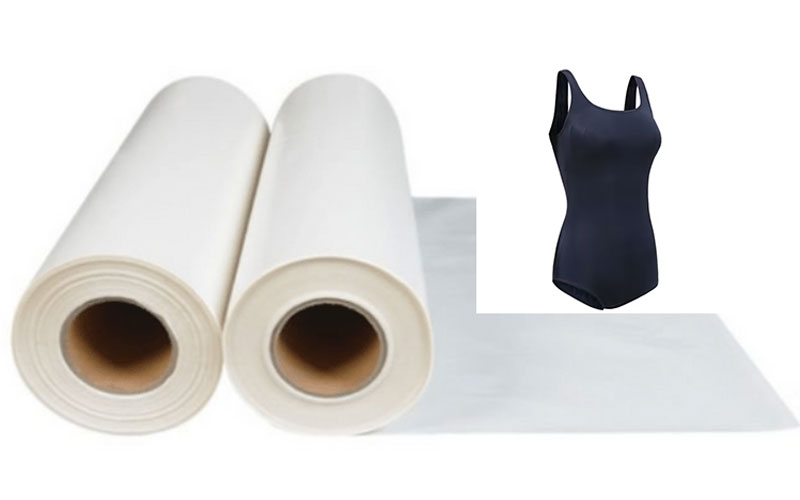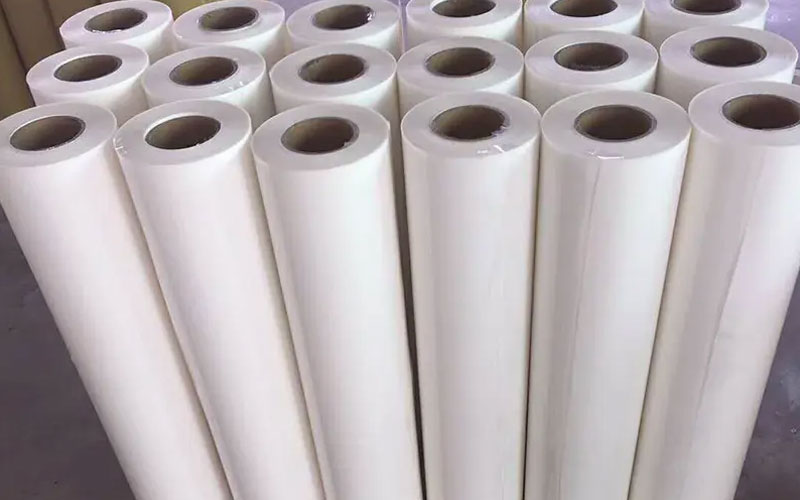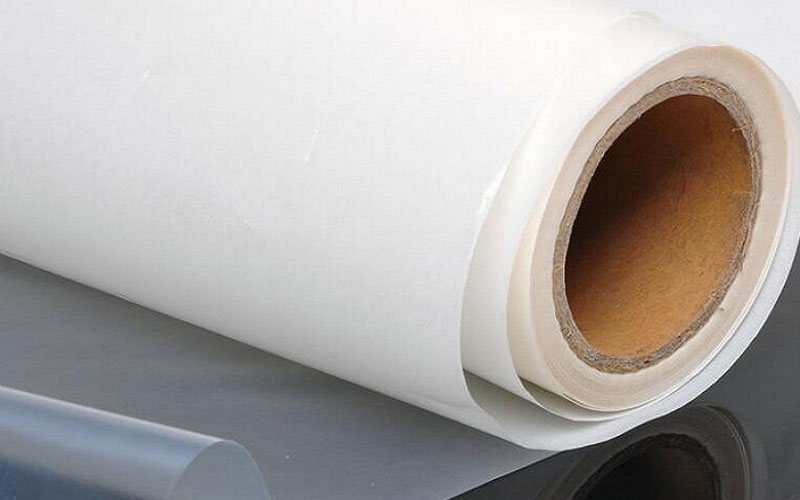Swimsuits are common items in daily life, especially women’s swimsuits, and of course men’s and children’s swimsuits. Unlike gymnastics suits, swimsuits generally do not sink in water. Swimsuits are usually made of textile materials that do not relax or bulge when exposed to water. So, what kind of hot melt adhesive film is usually used for the composite of swimsuit fabrics?

Swimsuit materials and their characteristics
First, let’s take a look at the materials of swimsuits. According to the characteristics of different materials, you can choose a suitable hot melt adhesive film. Common swimsuit fabrics include DuPont Lycra, nylon and polyester. Among them, nylon fabric is the most common swimsuit material, with the same elasticity and softness as DuPont Lycra, but with a shorter service life, so the price is cheaper. DuPont Lycra fabric is usually used for one-piece swimsuits, with excellent elasticity and softness, and comfortable to wear. Polyester fabric is a low-priced product with poor elasticity and relatively average comfort.
Hot melt adhesive film for swimsuits
The most commonly used hot melt adhesive film in swimsuit composite materials is TPU hot melt adhesive film. The characteristics of TPU hot melt adhesive film can fully meet the needs of swimsuit fabrics. It is widely used in swimsuit manufacturing due to its excellent flexibility and elasticity. However, the specific type of TPU hot melt adhesive film needs to be adjusted according to the actual use environment.

Why is TPU hot melt adhesive film more suitable for swimsuit lamination?
Adaptability to different melting points
TPU hot melt adhesive film has greater flexibility in melting point requirements. Regardless of the melting point of swimsuit fabrics, TPU hot melt adhesive film can adapt. This allows it to be used in the production of swimsuits of various different materials. At low melting points, the elasticity of TPU hot melt adhesive film may be slightly weaker, but as the melting point increases, the elasticity and toughness of TPU will be significantly enhanced, which can better meet the high-strength tensile requirements of swimsuits during exercise.
Washability
Since swimsuits are often in contact with water, the performance of fabrics in water is particularly important. TPU hot melt adhesive film has excellent washability, is not easy to fall off or deform, and can maintain long-term bonding effect. This is especially critical when swimsuits often need to be put into water and washed many times.
High transparency and softness
Some TPU hot melt adhesive film models have high transparency and excellent softness, which will not affect the appearance and comfort of swimsuits after lamination. This is especially important for the manufacture of high-end swimsuits, especially one-piece swimsuits and close-fitting swimsuit styles. After the TPU film is fused with the fabric, it can still maintain the original feel of the textile without appearing thick or stiff.
Wide range of applications
In addition to its application in swimsuits, TPU hot melt adhesive film is also widely used in the lamination of other clothing fabrics, such as sportswear, underwear, etc. Its mature technology and stable performance make it also excellent in these fields. TPU hot melt adhesive film is experienced in the application of different fabrics, with reliable technology, which can ensure the high quality and consistency of the product.
It is precisely because of these comprehensive advantages that TPU hot melt adhesive film has become the preferred solution for the lamination of swimsuit fabrics, bringing better elasticity, durability and comfort to swimsuit products.

Well, above Alster has made a simple analysis of the types of hot melt adhesive films for swimsuits. If you are looking for a suitable hot melt adhesive film manufacturer, or have any questions about the product, please contact Alster. Our professional business manager will contact you soon to recommend a more suitable model based on the specific situation and provide free samples.






